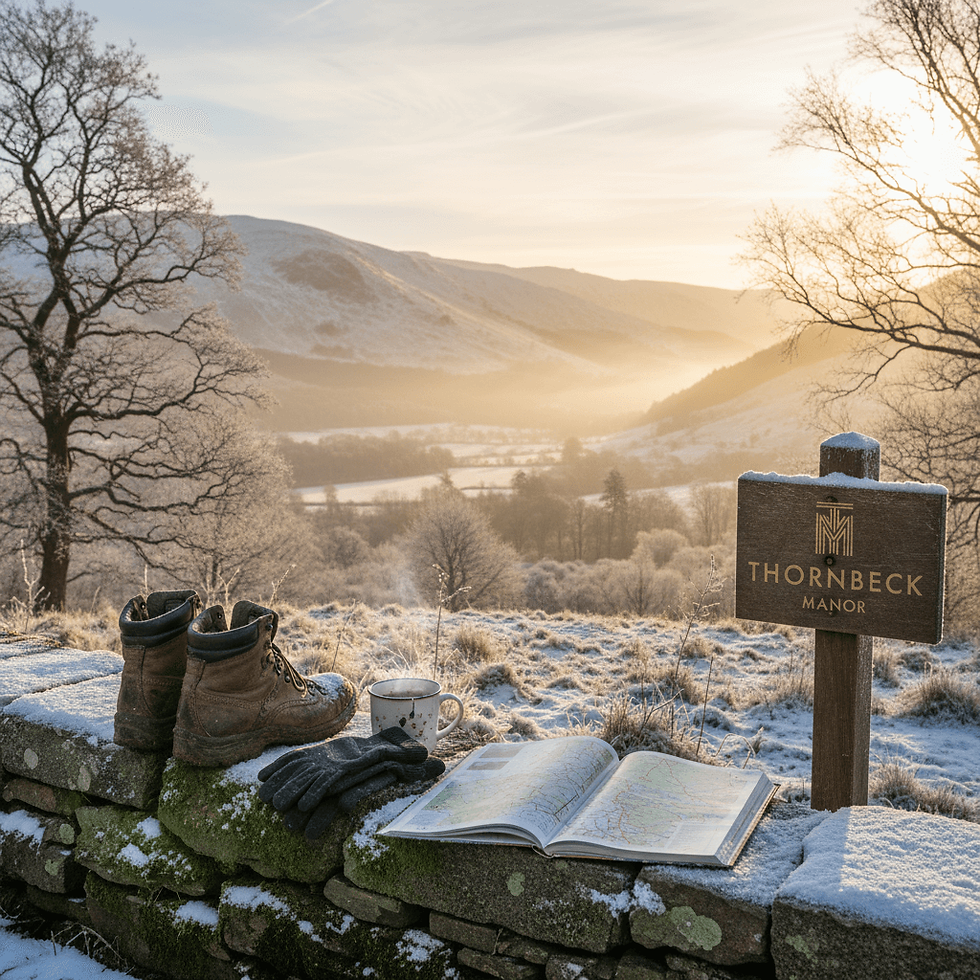Tracing the Historic Pathways of the Lake District's Rich Heritage
- alison7025
- Mar 28
- 4 min read

Uncovering the Lake District's Storied Past
The Lake District stands as one of Britain's most cherished treasures, with a history as rich and varied as its stunning landscapes. We at Thornbeck Manor believe that understanding the heritage of this magnificent region enhances the experience of staying here immeasurably. The cultural tapestry of the Lake District has been woven over thousands of years, from prehistoric settlements to Roman occupations, medieval monasteries to Victorian tourism.
When you explore beyond our luxurious villa retreat, you'll find yourself walking in the footsteps of those who shaped this unique corner of Britain. Archaeological evidence suggests human activity in the Lake District dates back to approximately 8000 BCE, with stone circles and axe factories revealing the resourcefulness of early inhabitants.
Roman Influences and Medieval Treasures
The Romans recognised the strategic importance of this region, establishing forts and infrastructure that fundamentally altered the landscape. At Hardknott Fort (Mediobogdum), perched high on Hardknott Pass, you can still trace the outline of this remote outpost. The spectacular positioning offers views that Roman sentries would have surveyed nearly 2,000 years ago.
As you venture through the countryside surrounding our Windermere retreat, notice how medieval influences persist in the architecture and layout of villages. Parish churches, some with foundations dating to the 12th century, stand as testament to the religious significance of the area. Stone bridges arching over bubbling brooks have connected communities for centuries, and many remain in use today.
We particularly recommend visiting Townend, a 17th-century farmhouse near Troutbeck that exemplifies the yeoman farmer lifestyle. The intricately carved furniture and well-preserved interior offer an authentic glimpse into Lake District life before industrialisation transformed Britain.
Literary Legacy and Artistic Inspiration
The Lake District's most celebrated cultural contribution may be its influence on literature and art. William Wordsworth, whose poetry immortalised the region's beauty, described it as "the loveliest spot that man hath ever found." His home at Dove Cottage in Grasmere provides fascinating insights into the poet's life and creative process.
From our manor, you're within easy reach of Hill Top Farm, where Beatrix Potter created many of her beloved children's stories. The author's careful preservation of both the property and surrounding farmland has helped maintain the authentic character of the Lake District that we cherish today.
The Romantic poets weren't alone in finding inspiration here. Artists like John Ruskin and J.M.W. Turner captured the dramatic landscapes in works that introduced the Lake District's majesty to audiences worldwide. Ruskin's former home, Brantwood on Coniston Water, offers both artistic treasures and spectacular views that continue to inspire visitors.
Industrial Heritage Among Natural Beauty
While the natural splendour often dominates perceptions of the Lake District, the region's industrial heritage forms an equally fascinating aspect of its story. Mining for copper, lead, and slate has shaped both the physical landscape and cultural identity of many Lake District communities.
The Honister Slate Mine represents this industrial legacy brilliantly. Still producing the distinctive green slate that adorns countless Lake District buildings (including elements of our own Thornbeck Manor), this working mine offers tours that illuminate the challenging conditions miners faced. When you return to the comfort of our luxury villa after such an excursion, the contrast between past hardship and present comfort becomes particularly poignant.
Water-powered mills once dotted the landscape, harnessing the region's abundant rainfall for industries from paper-making to gunpowder production. The Stott Park Bobbin Mill near Newby Bridge provides a remarkably well-preserved example of this industrial past, demonstrating how the seemingly remote Lake District was actually integrated into national and global manufacturing networks.
Experiencing Heritage Through Local Traditions
The cultural heritage of the Lake District lives on not just in museums and historic sites but in continuing traditions. Herdwick sheep, with their distinctive grey coats, have grazed these hills for centuries, tended by farmers using techniques passed through generations. The dry stone walls traversing seemingly impossible terrain represent countless hours of skilled craftsmanship.
When staying at our Windermere retreat, we encourage guests to sample Cumberland sausage, Grasmere gingerbread, and other regional specialities that connect you to centuries of local culinary tradition. Visiting during agricultural shows offers opportunities to witness traditional sports like Cumberland wrestling and hound trailing that remain vital parts of local culture.
Practical Tips for Heritage Exploration
We've found that planning heritage exploration benefits from seasonal consideration. Summer offers extended daylight hours for maximising your adventures, but winter provides a special atmosphere at historic sites, often with fewer visitors.
From our strategically located manor, you can access multiple heritage sites within comfortable driving distance. We recommend grouping visits geographically to reduce travel time. The Windermere Lake Cruises offer an excellent heritage experience themselves, following routes established by Victorian pleasure boats while providing access to historic sites around the lake.
For guests particularly interested in historical architecture, we suggest creating an itinerary that includes the grand estates of Sizergh Castle and Levens Hall alongside more modest but equally fascinating structures like the Bridge House in Ambleside.
Preserving the Past for Future Generations
Our commitment to the Lake District extends beyond providing luxury accommodation. We actively support conservation efforts that protect both the natural environment and cultural heritage that make this region extraordinary. The Lake District's designation as a UNESCO World Heritage Site in 2017 recognised the unique interaction between human activity and natural processes that has created this cultural landscape.
When you choose Thornbeck Manor as your base for exploring the Lake District's heritage, you're supporting businesses that value preservation alongside progress. Our renovations have carefully balanced modern luxury with respect for traditional building techniques and materials.
The Lake District's heritage isn't simply something to observe—it's something to experience, understand, and help preserve. We look forward to welcoming you to our corner of this historic landscape, where every stone, path, and vista tells a story waiting to be discovered.







Comments